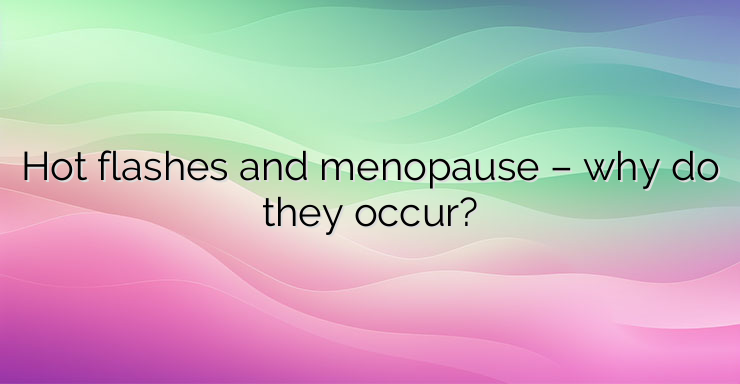Hot flashes are a rapid and exaggerated heat dissipation response consisting of profuse sweating, peripheral vasodilation, and a feeling of intense, internal heat. They are triggered by small increases in body temperature operating in a greatly reduced thermoneutral zone. This is due in part, but not entirely, to the depletion of estrogen in menopause. Increased central sympathetic activation, mediated through alpha-adrenergic receptors, is one of the factors responsible for the narrowing of the thermoneutral zone. Hot flashes are the most common symptom of menopause and are reported as a feeling of intense heat, along with sweating, flushing and chills. Sweating of the face, neck and chest is commonly reported. Hot flush episodes usually last 1 to 5 minutes, with some lasting up to an hour. The average duration of symptoms is about four years, with some lasting up to 20 years. Hot flashes are a hallmark symptom of menopause. Although their exact cause is not yet fully understood, hot flashes are thought to be the result of changes in the hypothalamus, the part of the brain that regulates body temperature. If the hypothalamus senses that the body temperature is too high, it starts a chain of events to cool it down. Blood vessels near the surface of the skin begin to dilate, increasing blood flow to the surface in an attempt to dissipate body heat. This leads to reddening of the skin on the face and neck in fair-skinned women. It can also make a woman sweat to cool the body. Women feel their hearts beating faster. Hot flashes associated with menopause usually follow a consistent pattern unique to each woman, but the pattern varies greatly from woman to woman. Some hot flashes are easily tolerated, some can be annoying or uncomfortable, and others can be debilitating. Other medical conditions such as thyroid disease, infection, or (rarely) cancer can also cause hot flashes. It should not be assumed that all hot flashes are caused by menopause alone. Although available treatments for hot flashes do not completely cure the symptoms, they do offer relief. Hot flashes usually subside, eventually without treatment, and no therapy is needed unless they interfere with daily activities. Hormonal estrogen therapy and estrogen-progestogen therapy for women are the standard methods of treatment. Another approved hormonal treatment product combines estrogen with the selective estrogen receptor modulator bazedoxifene instead of a progestogen. Bazedoxifene is an estrogen agonist/antagonist, meaning it acts like estrogen in some tissues while inhibiting estrogen activity in others. For women who prefer not to take hormones or cannot take hormones safely, non-hormonal drugs approved to treat depression have been found tocalled selective serotonin reuptake inhibitors, are effective in treating hot flashes, although they do not have depression. References: 1. Kronenberg F. Hot flashes: epidemiology and physiology. Ann. NY Acad. Sci. 2. Feldman BM, Voda A, Groseth E. The prevalence of hot flashes and associated variables among perimenopausal women. Res. Nurs. Health. 3. Gold EB, Colvin A, Avis N, Bromberger J, Greendale GA, Powell L, Sternfeld B, Matthews K. Longitudinal analysis of the association between vasomotor symptoms and race/ethnicity across the menopausal transition: study of women’s health across the nation . 4. Freedman RR. Biochemical, metabolic, and vascular mechanisms in menopausal hot flushes. Fertil. Sterile. 5. Molnar GW. Body temperature during menopausal hot flashes. J. Appl. Physiol.: Respir. Environ. Exercise Physiol.


Leave a Reply